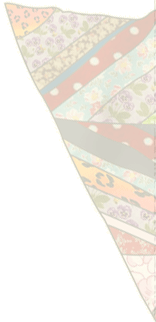

All patterns on the 4-H Clothes Line Website are children's sizes small, medium and large.
If you are working with older children, you may need to alter the patterns or purchase a similar pattern in an appropriate size.
| Child Sizes | Small | Medium | Large |
| Chest | 26" - 28" | 28 1/2" - 30" | 30 1/2" - 34" |
| Waist | 23" - 23 1/2" | 24" - 25 1/2" | 26" - 27 1/2" |
| Hip (7" below waist) | 27" - 28" | 28 1/2" - 32" | 32 1/2" - 36" |
| Approx. Height | 50" - 52" | 56" - 58 1/2" | 61" - 61 1/2" |
 New York State 4-H Resource Directory lists publications that support 4-H programs. Click on Academic Subject Browse. Click on Home Skills and Consumer Science. View the descriptions for clothing, textiles, and sewing resources.
New York State 4-H Resource Directory lists publications that support 4-H programs. Click on Academic Subject Browse. Click on Home Skills and Consumer Science. View the descriptions for clothing, textiles, and sewing resources.
Website: http://cerp.cornell.edu/4H/
 4-H Sewing Essentials outlines the 4-H
project Sewing Expressions, including easy-to-make items and an extensive
list of relevant links.
4-H Sewing Essentials outlines the 4-H
project Sewing Expressions, including easy-to-make items and an extensive
list of relevant links.
Website: http://www.4-hcurriculum.org/projects/sewing/
 Sewing.org provides information on sewing equipment, ideas for community projects, and many fun items to sew.
Sewing.org provides information on sewing equipment, ideas for community projects, and many fun items to sew.
Website: http://www.sewing.org/index.html
Support provided by the College of Human Ecology, Cornell University and Smith Lever funds from the Cooperative State Research,
Education, and Extension Service, U.S. Department of Agriculture. Any opinions, findings, conclusions, or recommendations
expressed are those of the author(s) and do not necessarily reflect the view of the U.S. Department of Agriculture.